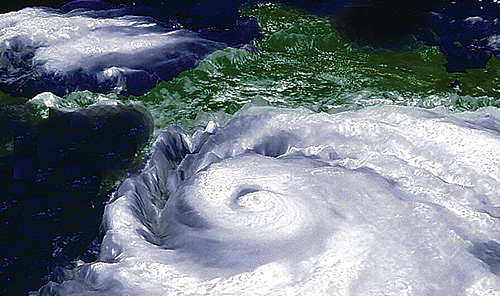Front Line: Climate Change Concerns Begin to Take Center Stage
Locations that invest in resilience measures against climate change and catastrophic weather may be more attractive to investors.
Q4 2020

Such concerns are outlined in detail in a report released recently from the Urban Land Institute (ULI) and Heitman entitled Climate Risk and Real Estate: Emerging Practices for Market Assessment. It finds that investors have moved from assessing risk for individual properties to deciding whether to pull out of entire cities.
“Leading real estate investment managers and institutional investors are increasingly recognizing climate risk as a core real estate issue that is beginning to affect their decisions at the market level as well as at the asset level,” according to the study.
Executives elsewhere indicate concern. Mark Williams, president of Strategic Development Group, notes that beginning about 10 years ago, his firm noticed some clients requesting higher standards of floodplain data greater than 100 years. “There is increased concern about flooding of inland areas and a desire to move higher related to flood plains,” he says.
Investors have moved from assessing risk for individual properties to deciding whether to pull out of entire cities. Williams reports that rising sea levels, which have been accelerating for a least the last 50 years, have significant implications for coastal development of all kinds — ports, terminals, cities like Miami and Charleston, and manufacturing facilities that are waterside.
Inland locations also share concerns. Chattanooga, Tenn., for example, faces weather risks related to extreme heat and inland flooding.
“While extreme heat poses a risk primarily to vulnerable communities that are located in dense urban [areas], it does not pose a substantial risk to industrial projects,” reports Michael Walton, executive director, green|spaces, a nonprofit that, among other things, helps support a business culture of sustainability in Chattanooga. “Inland flooding is of more concern, but local leadership is taking steps to plan ahead and mitigate associated risk.”
Chattanooga has had back-to-back years of record rainfall. “In these extreme events, some limited business closures have happened, but these are generally very temporary,” Walton says. “We are not aware of any businesses that haver relocated because of this.”
The stakes are high for local governments that must provide sufficient infrastructure and implement smart climate change policy. Some locations are on the positive end of the issue. Jon Snell, president and CEO of Sun Corridor, Inc., points to Tucson, Ariz., as an example. “Many companies are attracted to the southern Arizona region due to our stable weather,” he says. “Our clear skies — 350+ days of sunshine a year — and dry climate have attracted aerospace-related businesses.”
One example is Sandvik Materials Technology, which recently expanded to Tucson, in part due to the need to expand production capacity in a stable environment close to existing customers and a talented workforce.
The ULI/ Heitman report emphasizes, however, that the stakes are high for local governments that must provide sufficient infrastructure and implement smart climate change policy to protect vulnerable citizens and businesses in order to continue attracting investment as climate change accelerates.
“As understanding of market risk increases, cities that proactively invest in resilience measures may become more economically attractive to real estate investors,” says the report. “Conversely, a lack of proactive investment in resilient infrastructure and prioritized policies could lead to a spiral of decreased capital, ultimately making it even harder to fund much needed investments to protect their communities from the impacts of climate change.”
Project Announcements
Australia-Based Aquatic Leisure Technologies Group Plans Opp, Alabama, Manufacturing Operations
12/11/2025
Teradyne Plans Wixom, Michigan, Robotics Operations
12/11/2025
Robinson Plans Altoona, Iowa, Manufacturing Operations
12/11/2025
BioTouch Expands Columbus, Georgia, Operations
12/11/2025
Natrion Plans Erie County, New York, Battery Components Operations
12/11/2025
Czech-Based GZ PrintPak Expands Mount Pleasant, Wisconsin, Manufacturing Operations
12/11/2025
Most Read
-
The Workforce Bottleneck in America’s Manufacturing Revival
Q4 2025
-
Rethinking Local Governments Through Consolidation and Choice
Q3 2025
-
First Person: Filter King’s Expansion Playbook
Q3 2025
-
Lead with Facts, Land the Deal
Q3 2025
-
How Canada Stays Competitive
Q3 2025
-
Investors Seek Shelter in Food-Focused Real Estate
Q3 2025
-
America’s Aerospace Reboot
Q3 2025



